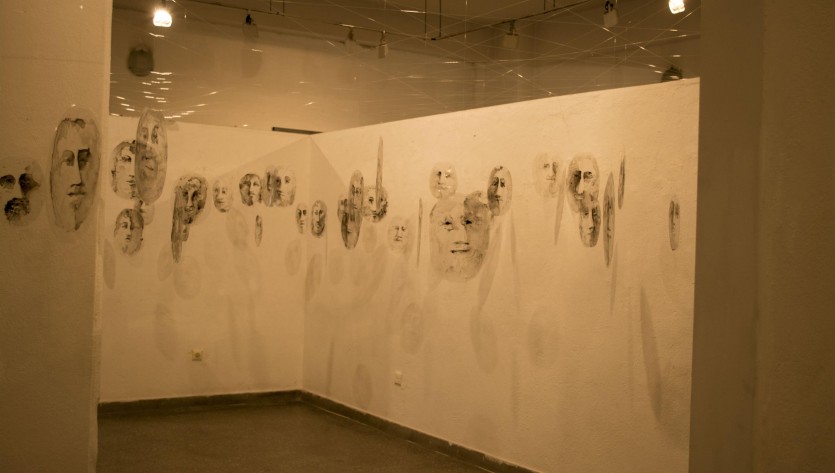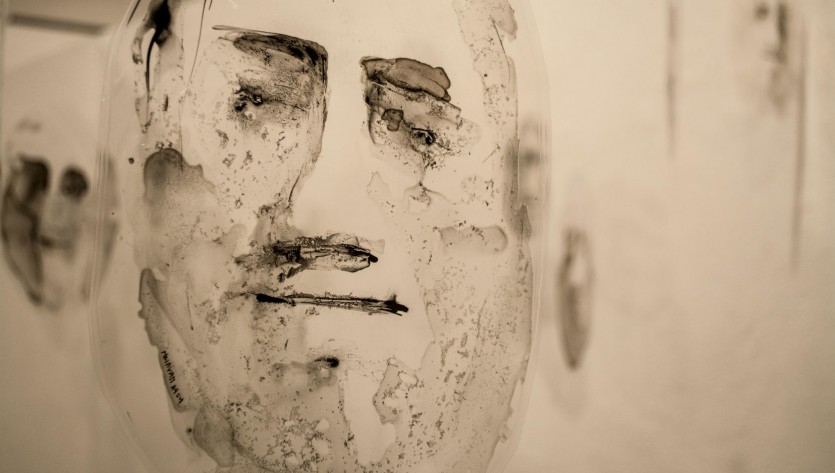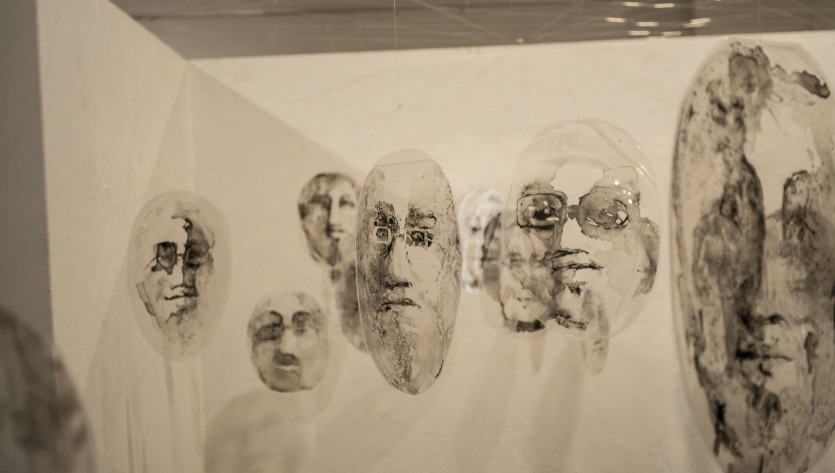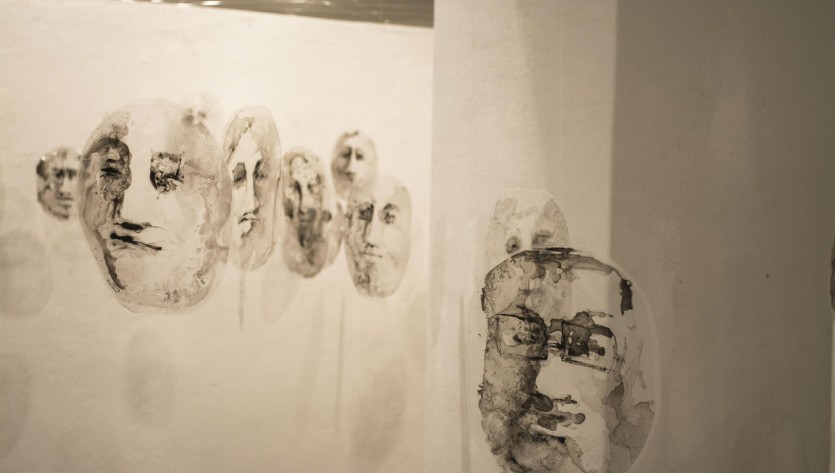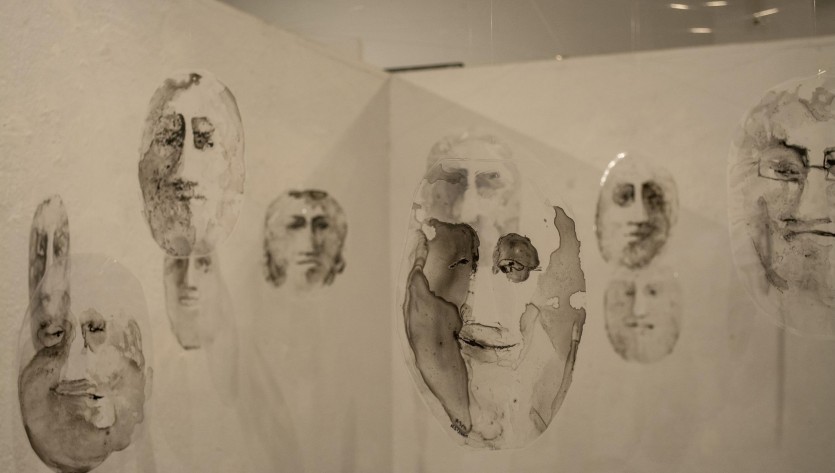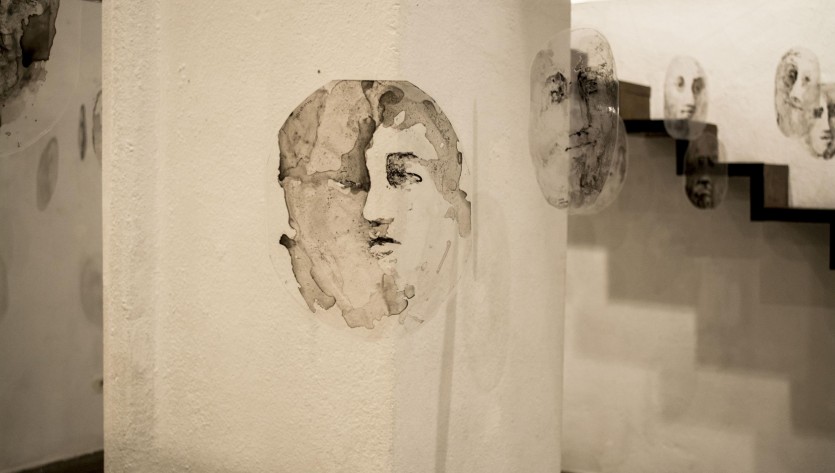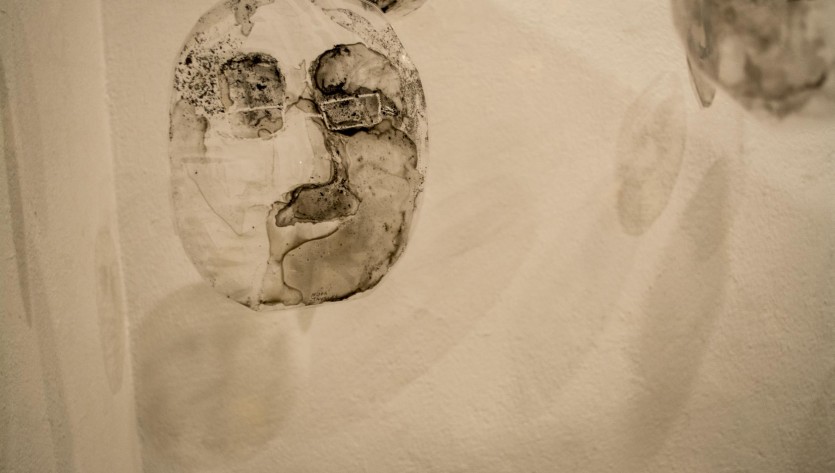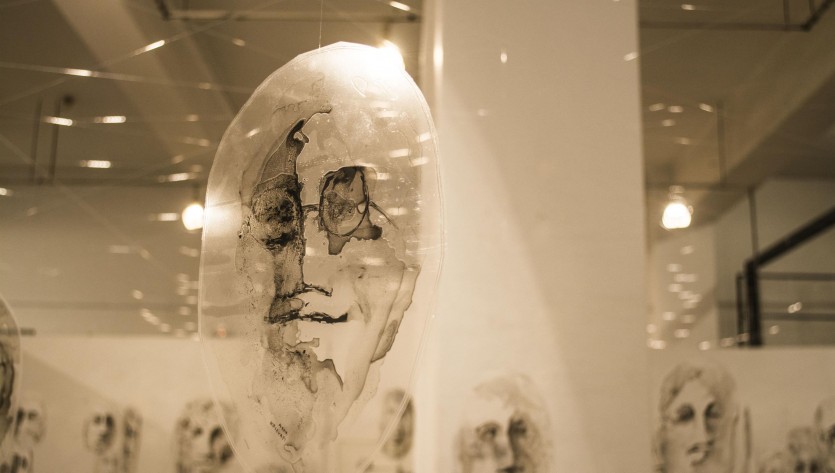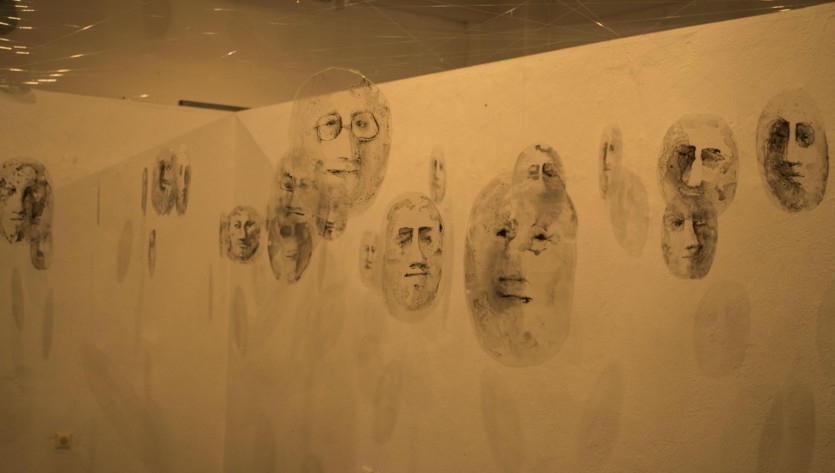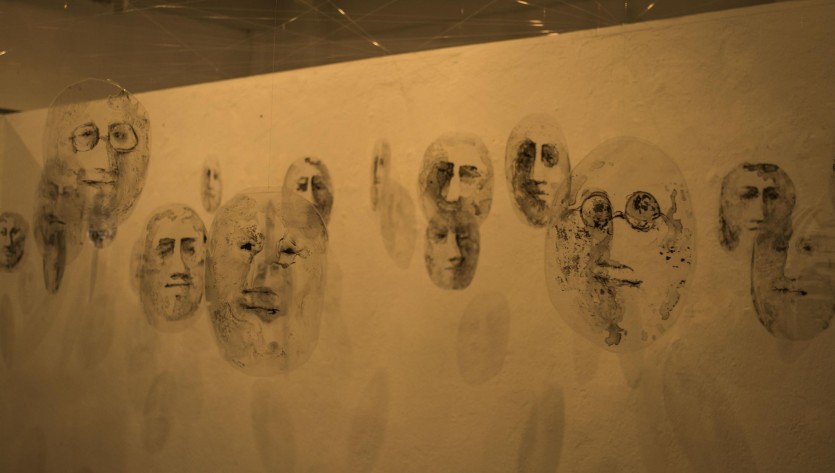FACES?… FAÇADES?
“Masks help us each time wear our real face. We identify so much that the mirror reveals the scenes from the past or non-desirable future. Masks contain us up to the erotic spasm. Only the time of death do we get our look without mask, as our life has made us useless and it does not want us any more. Our real face is the most useless one.” M. Hatzidakis. Faces?… Façades?… The other side of Being and Appearing. The second is contrary to the first, to reality, truth. Appearing is interwoven with lie, fraud, non-truth. But we know that appearance (phenomenon) is a way to learn a part of the truth. The façade is something that goes in front of the face, so it contains a part of the truth of the person who wears it. “Besides, humans are thus a marionette resigned to conventional lies, a mask that comes in between useless desires of their personality and conventional comedy that superstitions of each age impose.” Piero Tosi . By immaterial masks humans wear in every moment of their life, they hide their intentions and even more they pretend not only towards others but towards themselves as well. They cover, forget what really causes them pain.
Installation 2
Dimensions: Variable
Materials: Ink, plastic, fishing line.
Face or facade
An artistic commentary by Nora Pavlidi about loss, detection, view, emergence, revelation of the face and projections to the self and the Other, sometimes as a manifestation of truth and sometimes as a corrupted icon / facade.
The installation is a tripartite development in the space. In the first space, what occupies the greatest part of the room is wall-mounted steel plate sheets and suspended masks / frozen emotions made of pulp. Viewers’ engagement is achieved through their self-reflection on the mirrored surface sheets. Faces and facades discover their common place through the unifying surface of the steels in real time, so that the plausibility of the engagement which is caused in the artistic field disrupts the boundaries of the face / facade.
In the same space, scattered clusters of human faces and masks indicate the start and origins of portraits-tracks suspended in the second space of the installation, but also the …ιονικά.. and multiple complexes of human faces on the frames negotiating the balance, imbalance and correlations of interpersonal relationships, found in the third space.
The identity features of the faces-tracks have been drawn on transparency using ink but remain unclear. This causes ucertainty while the viewer participates in the project moving through and near the faces. The latter are viewed through the transparency of the face-track.
Faces and facades acquire their meaning through artistic practice, setting us outside the obvious, opening a common place amongst the artist / viewer, project / host outside any identity constraints, making us be open to the upcoming, the unexpected, where eventually our internal noise is no longer familiar.
Maria Kenanidou Art Historian

